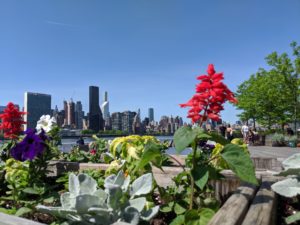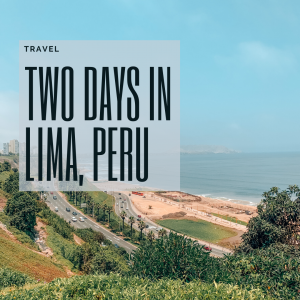Traveling from Northern Virginia to NYC
Evaluating the Options to get from Northern Virginia to New York City.

By Shainur Ahsan
Introduction
I’ve spent the last few months during the spring and winter traveling back and forth between Northern Virginia and New York City to meet up with my wife who was a part of a research program at a hospital in Manhattan. The cities in the Northeast are well-connected with many modes of transport. New York City in particular is one of the easiest cities to travel to with multiple bus stations, train stations, and airports. As I searched for the easiest way to get to NYC, I evaluated the different modes and am sharing my thoughts in this post.


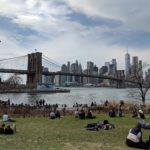
Let’s first look at all the available ways to travel between the DC metro area and NYC and analyze the approximate cost.
Personal Vehicle

Bus
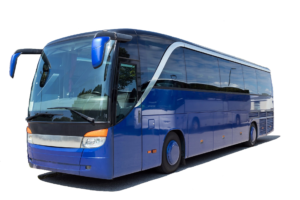
Buses are a great choice for transportation in the Northeast due to the many routes. Over the years, many companies have sprung up to compete with the traditional bus companies such as Greyhound. Here in the DC metro, buses depart not only from Union Station near downtown DC, but also from multiple suburbs in Northern Virginia and Maryland. This is one great advantage over the next two transportation methods.
Since the arrival of Megabus, other companies have realized you don’t need much infrastructure to start up a bus route. Bus stops for regional buses have sprouted up near metro stops and shopping centers around the periphery of the city. I know of at least five stops in Northern Virginia and there are additional stops in Maryland. Depending on the bus route, you may even get onto a direct bus to NYC without having to deal with intermediate stops. Another great advantage is that the costs are really low. In many cases, you can get a round trip bus ticket for around $50 and the fares aren’t that much higher if you wait to the last minute to book. The bus could theoretically cost you half the cost of driving yourself. You also get the four hours to yourself to read, use your smartphone, or take a nap. Many buses offer Wifi and power outlets for each seat. In most cases, you can also take food on-board.
Some of the downsides to using the bus are the ability to get to the stop, settling on a departure time, and being subject to almost the same level of traffic as if you were driving yourself. If you depart from Union Station in DC, it’s probable that you’ll have some way to get there whether it’s inner city bus, metro, or uber/taxi. If you are taking the bus from the suburbs, most likely your options are more limited. You have to take into account the time to get to the stop in your travel time. You are also on the bus company’s schedule, although with the many different buses, you may not have difficulty finding a departure time that works. Another partial disadvantage is that the buses use the same route you would use as if driving yourself and you would therefore be subjected to much of the same traffic. However, buses are able to take advantage of express lanes which exist around the DC beltway and on I-95 outside of Baltimore. All in all, the cost and ability to relax are well worth dealing with the inconveniences of not driving.
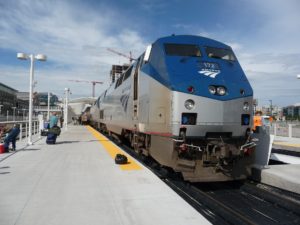
Train
The train is another viable option especially for the Northeast. The train typically takes three and a half hours to go between Union Station in DC to Penn Station in NYC. It is not subject to the same traffic you would see on I-95, but you may occasionally face a delay due to congestion along the busy Northeast routes. There is a definite time advantage over driving and taking the bus if you are able to get to Union Station easily. You can get up and walk around on the train which is harder to do on the bus.
However, it is often an expensive choice if tickets are not purchased in advance. Unlike buses, the trains are all operated by one company, Amtrak. Amtrak does not have competition in the Northeast and actually uses fares along the Northeast corridor to subsidize routes in other parts of the country. Typically, the cheapest round trip fares start at $100 (from Union Station). You are also limited by the departure points. There are three departure points in Northern Virginia and a few more in the Maryland suburbs. The train schedules from the suburbs are very limited and fares are often higher. If I were to search for round trip train tickets for two weeks from now departing from Burke, VA, I would have only one choice of train and would have to pay around $360 which is getting close to the cost of a plane ticket. If you are able to depart from Union Station, you do have a great deal more options for departure times and often lower fares. It can be worth it if you are able to plan your trip in advance and take advantage of Amtrak’s lowest fares.
Amtrak also offers high-speed Acela service between DC (Union Station) and New York. Fares are considerably higher than value fares and travel time is only reduced by about half an hour.
Plane

Among all the travel choices, planes represent the least amount of travel time with an airtime of about one and half hours. The cost is also relatively higher than the other options but can still be cheaper than the train. Round trip tickets two weeks in advance can be purchased starting at $200 with the average price closer to over $300. The cheaper fares are usually “hacker” fares and have you departing and arriving at different airports either in DC or NYC. There are three major airports in the New York City metro: JFK, LaGuardia, and Newark.
Though the airtime is short, you have to take into account getting to the airport early enough to go through security. When you take this into account, the trip may take close to four hours. Another disadvantage is that the airports in New York are all outside of the city center and may take you some time to reach Manhattan if that is your final destination. While JFK is connected to the New Yrok subway, you would need to take a bus from Laguardia or Newark. Another disadvantage is having to pay for checked bags and being limited in what you can take. The other options on this list have much more generous baggage policy.
My Choice
After considering all the options, I ultimately chose the bus to make all of my trips to NYC this year. The main factors in my choice were cost and ease of getting to the bus stop. Of course, the bus stop may not be as convenient for others. My choice of bus company was BestBus as they have stops from the Vienna Metro stop which is about 15 minutes away from my house and is easy to get to. The schedule was also favorable, as I could leave after work on Friday afternoon and get back on Sunday evening. To get to the bus stop, I would take an Uber which was typically around $15 each way. Every time I considered taking another form of transport, I ultimately found that I could not beat the convenience and cost of the bus.
I found that once I got onto the bus, I could relax and catch up on podcast or social media. Although the bus usually gets stuck in afternoon traffic leaving DC, the ride overall was still relatively smooth. The bus dropped me off near Penn Station which was conveniently located near a few subway stations. As I would usually stay in Manhattan, this meant I was a short ride away from my typical destination. With my travel experience this year, I see myself taking a few trips a year up to NYC in the coming years. I plan to write a more detailed review of BestBus in the future.
Advantages of Taking the Bus
- Low Cost Fares
- Easily Accessible Bus Stop
- Read, Watch, Play, or Nap During Trip
Disadvantages of Taking the Bus
- Subject to Same Traffic as Driving
- Restricted to Fixed Departure Schedule
- Travel Time Similar to Driving
